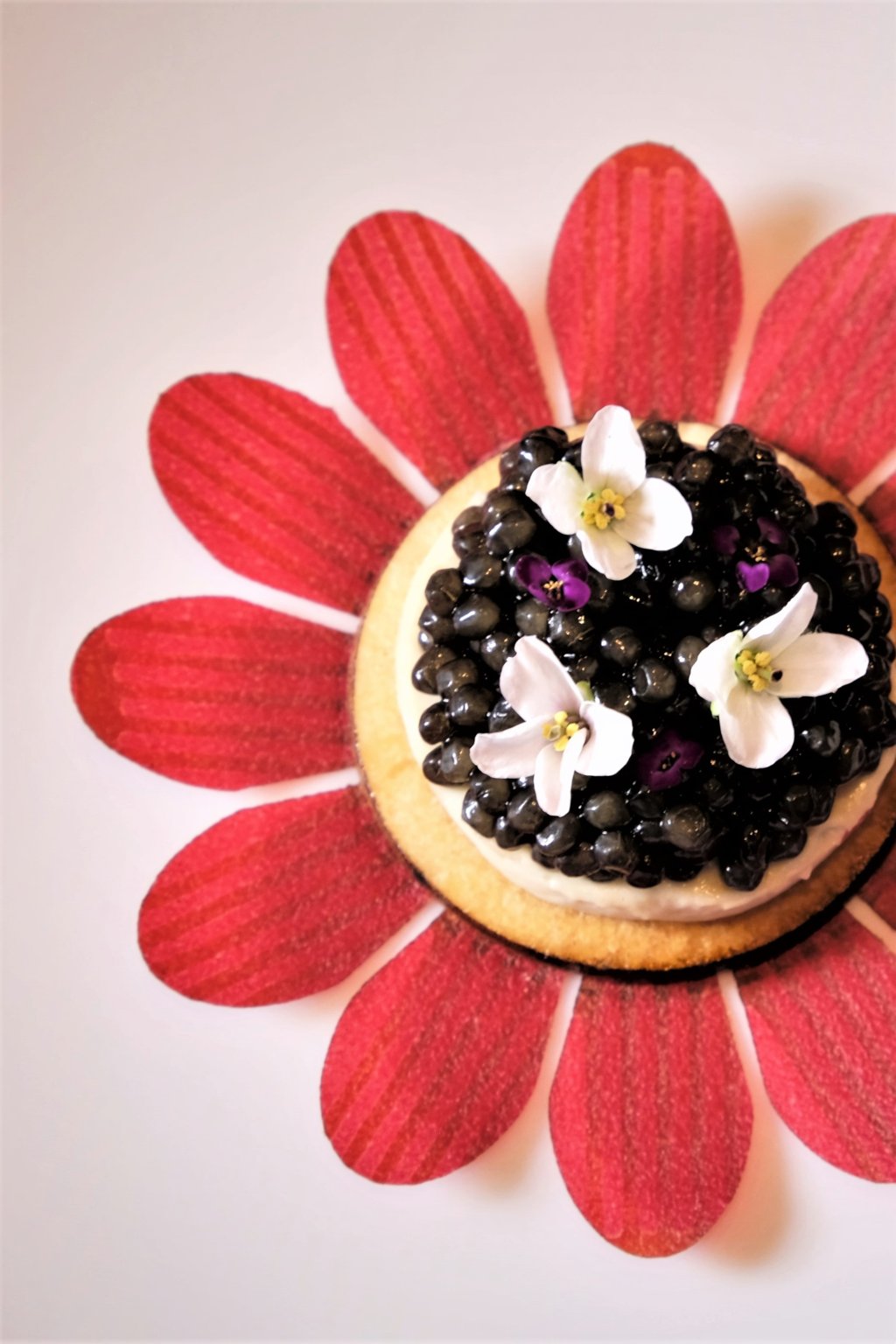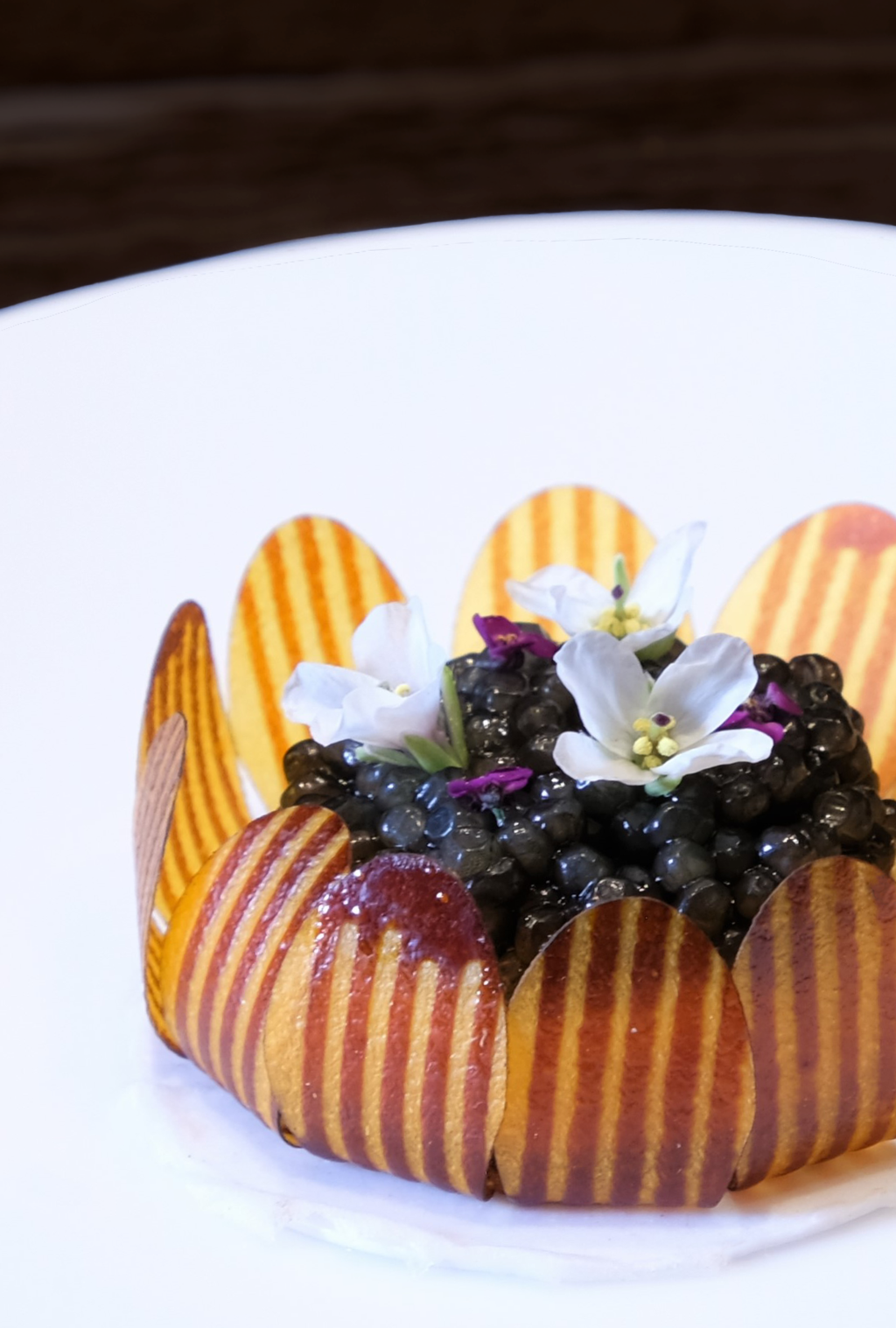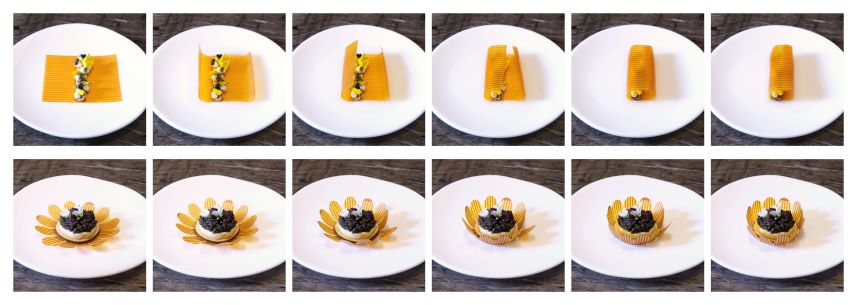SHAPE-CHANGING FOOD: Restaurant Experience
In this shape-changing food project, we worked together with the world-class restaurant Alchemist in Copenhagen. The chefs there were extremely interested in this transforming material. For this reason, we then focused on integrating shape-changing food in the restaurant setting. To achieve a more consistent reaction, the influencing factors in the preparation process were researched and analysed.
To reduce the gap between human food interaction and gastronomy design practices, the material was brought to a new level with development chefs in their kitchen by using digital manufacturing techniques. Involving chefs in the process, with daily feedback, tastings, and brainstorm sessions, resulted in a better understanding of the material. This was then integrated into the development of two final dishes.
The final design is a filled edible tartelette, a flower shape that starts to close when served in front of guests. The base is edible paper made from beetroot and/or carrots, with a chitosan pattern 3D-printed on top. The printed pattern swells when served in reaction to a low-pH liquid.


After printing, the sheets are lasered in the shape of a flower and served, with the ingredients of the dish plated in the centre. When the petals of the flower start to close, the result is a beautiful, tasty tartelette. Important for the design was to develop a material that could change in front of the guests instead of in the kitchen, to create a more interactive dining experience.
Working in a restaurant as a designer, it is important to understand the chefs’ values and daily practices. Creating a dish to be served at the best restaurant in Europe is a challenging design process. It needs to be perfect and reproducible for up to 50 people every evening.
For the shape-changing dish, it was important to collaborate with chefs to understand their preferred taste, texture and appearance.
Implementing design in a kitchen is challenging but creates many new possibilities. The chefs need to be open to using new technologies in their kitchen and need to learn about the chemical reactions involved. By doing so, new opportunities arise for using food ingredients as material, resulting in unique interactive dining experiences.

Share
Contacts
- -Elzelinde van Doleweerd



